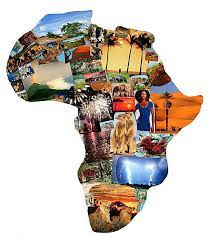Green Entrepreneurship in Africa: Fueling Sustainable Development and Economic Growth

Updated at: 2025-06-19 22:32:02 (1 month ago by Melkisedeck Leon Shine)
Cultivating Green Entrepreneurship in Africa: A Framework for Sustainable Development
Africa possesses immense potential for economic growth and environmental stewardship, intrinsically linked through sustainable development. Realizing this potential demands a robust ecosystem of green entrepreneurship, empowering innovative actors to drive transformative change. This necessitates a strategic approach encompassing several key elements: fostering economic self-reliance, investing in human capital through education, promoting pan-African collaboration, embracing green technologies, and leveraging global best practices. These elements will be explored through the lens of relevant economic and development theories.
1. Fostering Economic Self-Reliance: A Dependency Theory Perspective
Overcoming economic dependence is crucial for sustainable development. The theory of dependency, which highlights the exploitative nature of global economic structures, underscores the need for empowering local entrepreneurship. Investing in indigenous businesses fosters a virtuous cycle of innovation and economic progress, strengthening community ownership and driving localized sustainable development. This approach, grounded in the principles of endogenous development, prioritizes locally-driven solutions, reducing external aid dependence and building economic resilience. The goal is to shift from a periphery position in the global economy to a more central role, capable of self-determined growth. This can be achieved by supporting local value chains and promoting the development of indigenous industries, thereby minimizing reliance on external imports and fostering a more equitable distribution of wealth.
2. Investing in Human Capital: The Human Capital Theory and its Application
Human capital theory emphasizes the importance of education and skills development for economic growth. Strategic investment in education and training programs equipping the workforce with green economy skills is paramount. This necessitates fostering entrepreneurship, innovation, and critical thinking. The curriculum should integrate practical skills development, technological literacy, and environmental sustainability principles. This investment translates into a more productive and adaptable workforce capable of driving innovation and creating green jobs. Specific skills in renewable energy, sustainable agriculture, and eco-friendly manufacturing should be prioritized, aligning education with the needs of a burgeoning green economy. This approach builds a foundation for long-term sustainable growth, moving beyond merely addressing immediate needs to cultivating future capabilities.
3. Pan-African Collaboration: Network Theory and Regional Integration
Network theory highlights the importance of interconnectedness for collective progress. Pan-African collaboration, facilitated by robust knowledge sharing and resource pooling, is crucial. Overcoming geographical and institutional barriers creates a more resilient and interconnected entrepreneurial ecosystem. Regional initiatives, knowledge hubs, and cross-border collaborations promote efficient resource allocation, leverage comparative advantages, and amplify opportunities. The establishment of collaborative platforms, leveraging digital technologies for knowledge exchange, can greatly facilitate this process. This approach transcends national borders, fostering a unified front to address common challenges and collectively harness the continent's diverse talents and resources for sustainable development.
4. Embracing Green Technologies: Sustainable Development Goals and Economic Diversification
The adoption of green technologies represents both an environmental imperative and a significant economic opportunity. Investing in renewable energy, sustainable agriculture, and eco-friendly manufacturing creates new ventures, generates employment, and strengthens local economies. This aligns directly with the Sustainable Development Goals (SDGs), particularly those related to climate action and economic growth. The transition to sustainability creates a win-win scenario, simultaneously safeguarding the environment and stimulating economic diversification, reducing dependence on resource-intensive and environmentally damaging industries. This strategy also strengthens resilience to external economic shocks, creating a more robust and sustainable future.
5. Leveraging Global Best Practices: Diffusion of Innovation Theory
The diffusion of innovation theory explains how new ideas and technologies spread through a society. Learning from global success stories, such as the transformative impact of the Green Belt Movement or the innovation in the electric vehicle industry, offers valuable insights. These examples showcase the transformative potential of determination, innovation, and commitment to positive change, inspiring African entrepreneurs to achieve similar breakthroughs. Analyzing successful models from other contexts, adapting them to the specific needs and conditions of African nations, can accelerate the adoption of innovative solutions and foster rapid progress. The identification and dissemination of best practices can be achieved through international collaborations and knowledge sharing platforms.
Conclusions and Recommendations
The development of green entrepreneurship in Africa is not merely a desirable goal, but a critical necessity for sustainable development. By systematically fostering economic self-reliance, strategically investing in human capital, promoting robust pan-African collaboration, embracing green technologies, and learning from global best practices, Africa can chart a course towards a self-reliant and sustainable future. This requires a multi-pronged approach involving individuals, communities, governments, and the international community. Further research should focus on identifying specific policy interventions that can effectively support green entrepreneurship in different African contexts, taking into account regional disparities and specific environmental challenges. A comparative analysis of successful green entrepreneurship initiatives across various African nations could provide valuable insights into replicable models and best practices. Moreover, investigating the role of technology transfer and knowledge sharing in facilitating the adoption of green technologies is crucial for accelerating progress towards sustainable development.
Reader Pool: What are the most significant barriers to the growth of green entrepreneurship in Africa, and what strategies could effectively mitigate these challenges?




